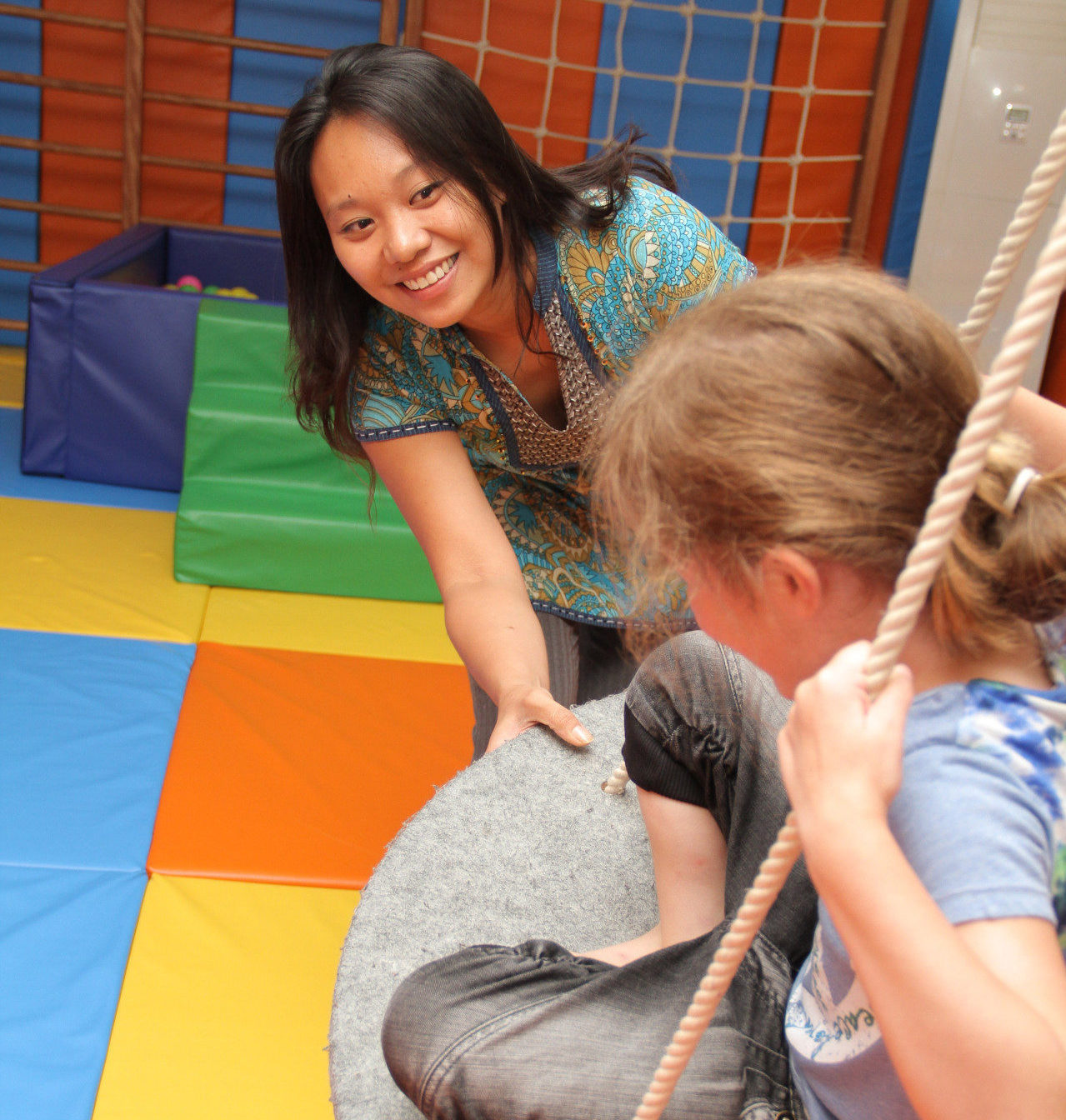By Regina Nicolas Schaufelberger, Physical Therapist and Sensory Integration Specialist,
and Ronni Rowland, Writer
Sensory Processing Disorder (SPD) is a neurological disorder in which the sensory information that an individual perceives causes them to either over- or under-react to stimulation. The senses include: sight, sound, smell, taste, touch, tactile, vestibular and proprioceptive.

How to Recognize SPD:
“The first step in treating SPD is getting an accurate diagnosis,” says Regina Nicolas Schaufelberger, physical therapist and sensory integration specialist with ELG. Regina explains that SPD is almost always complemented with another disorder, such as ADHD, autism, central auditory processing or even a behavior issue. “Correctly diagnosing which behaviors belong to SPD and which behaviors belong to the other disorder can be quite complicated and requires an experienced therapist.” Concerned that a child in your care might have SPD? Regina lists warning signs that might be indicators that you should get a professional involved.
Sight dysfunction:
1. Shows discomfort in either bright or dim rooms.
2. Easily distracted by visual stimuli and has difficulty keeping eyes focused on the current task.
3. Gets attracted to spinning or moving objects.

Sound dysfunction:
4. Unable to locate the source of a sound.
5. Difficulty filtering out other sounds while trying to pay attention to one sound (such as a person talking).
6. Struggles to understand and remember what is said or read.
Smell dysfunction:
7. Smells everything (e.g. food; school – pen, eraser, whiteboard, classmate’s hair; park – slide, swing, leaves; subway – stranger’s bag, door) which affects child’s focus and appropriate social behavior.
Taste dysfunction:
8. Picky eater, often with extreme food preferences.
9. Difficulty with sucking, chewing, and swallowing. May gag or choke or have a fear of choking.
10. Continues putting objects in mouth beyond the toddler years.
Touch dysfunction:
(involves sensory input on our skin)
11. Doesn’t notice when touched.
12. Is under- or oversensitive to temperature (such as water temperature at bath time).
13. Is sensitive to certain fabrics and only wears clothing that is soft (or satisfying in some way).
Tactile dysfunction:
(involves analyzing the nature of sensory input on the skin such as texture, pressure, size, etc.)
14. Dislikes activities that involve messy, wet or sticky hands, such as bathing and finger painting.
15. Exhibits difficulty manipulating small objects, such as buttons on clothing.
16. Avoids hugging and touching others, even familiar people like parents and siblings. Especially dislikes unexpected physical contact.
Vestibular dysfunction:
(involves movement and balance as well as emotional regulation)
17. Experiences difficulty following instructions and staying on task.
18. Doesn’t like sports or playing on playground equipment.
19. Likes to spin, but has an aversion to being turned upside down or being at extreme heights (gravitational insecurity).
 Proprioceptive dysfunction:
Proprioceptive dysfunction:
(involves body positioning and spatial awareness)
20. Likes to play rough and engage in activities like wrestling.
21. When playing tag, tends to lack strength regulation, which makes their “tagging” almost look like hitting.
22. Difficulty with coordination, sequencing, timing, and rhythm.
Treating SPD:
Treatment for SPD can be coordinated at home and school. “A major goal of treatment is teaching the child strategies for how to manage the disorder,” explains Regina. While there is no single “cure” for SPD, families and educators who recognize the signs are better able to provide supportive environments that ease the discomfort and frustration associated with the disorder.
If you think your child or student might have an SPD, please contact us at [email protected] or call 4006 129 423 or +86 21 5206 6273 to get more information about how we can help.

 Proprioceptive dysfunction:
Proprioceptive dysfunction: